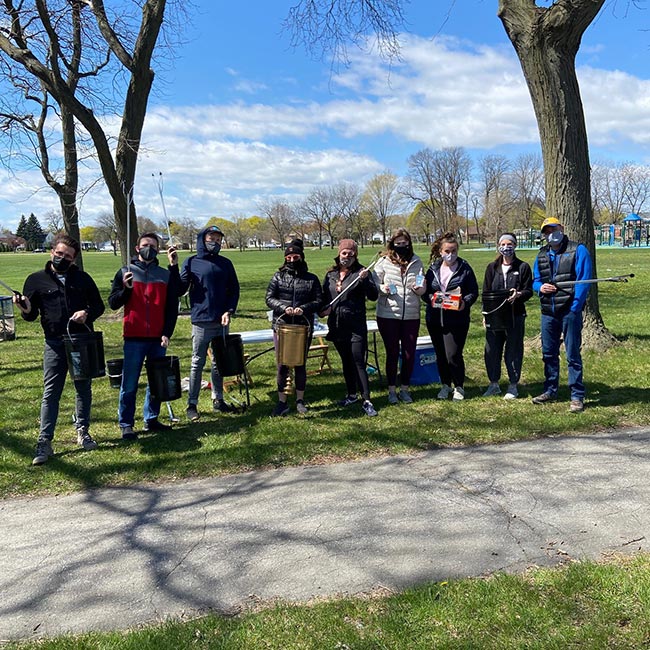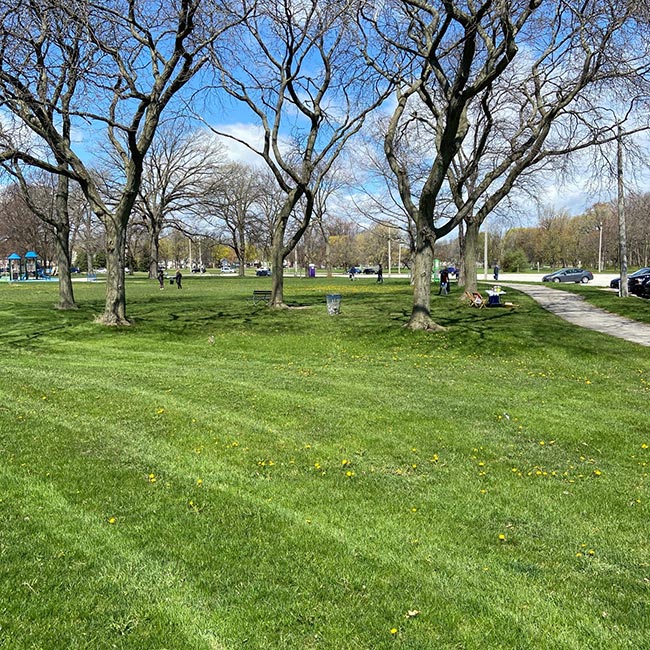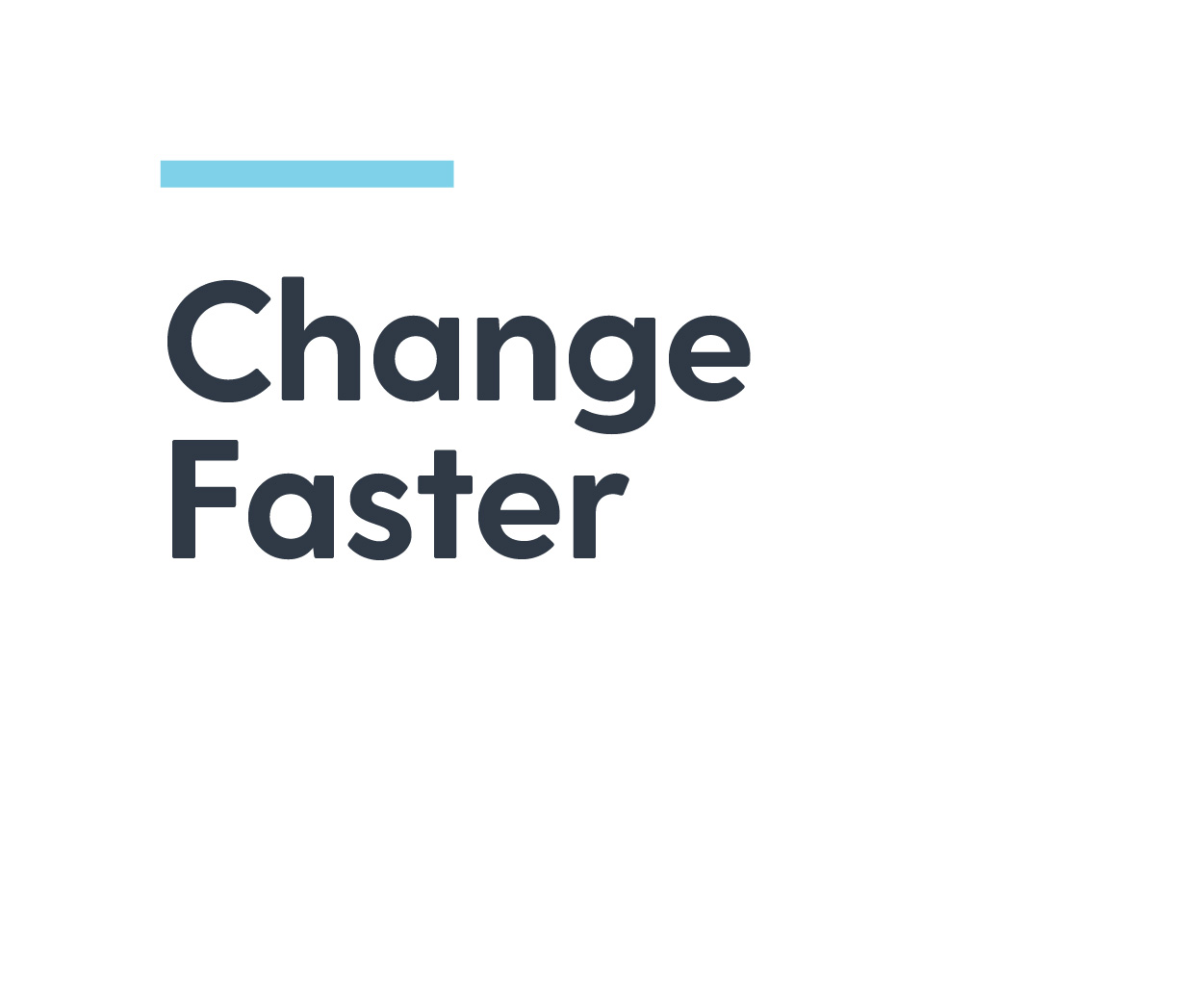The D&I Digest: May 2021
Featured in this issue: a Give More update, Older Americans Month and Asian Pacific American Heritage Month.
BR is committed to increasing and retaining diversity of thought, experience and background of our talent base at every level and function, and to actively creating a culture of belonging that embraces all of our employees as they are – because if we’re going to fully serve our clients, we need to show up as our full selves. Our goal is to develop a cross-functional team of employees and agency leaders that celebrates our people, delights our clients, better solves problems, and promotes a passion for diversity and inclusion.

Update
- Bader Rutter is donating to Eras Senior Network. Its programs reduce isolation for older adults and mobilize volunteers for community needs. Collectively, the agency brings more than 54 years of experience to the community, serves over 1,000 seniors and adults with disabilities each year, and coordinates more than 2,300 volunteers.
- Bader Rutter also donated to Asian Americans Advancing Justice to help #stopasianhate.
- Bader Rutter employees got out and helped clean up Lincoln Park in Glendale. Thank you! See below for photos.


Older Americans Month
When Older Americans Month was established in 1963, only 17 million living Americans had reached their 65th birthday. About a third of older Americans lived in poverty, and there were few programs to meet their needs. Interest in older Americans and their concerns was growing. A meeting in April 1963 between President John F. Kennedy and members of the National Council of Senior Citizens led to designating May as “Senior Citizens Month,” the prelude to “Older Americans Month.”
The theme of Older Americans Month 2021 is Communities of Strength. Older adults have built resilience and strength over their lives through successes, failures, joys and difficulties. Their stories and contributions help to support and inspire others.
There are many things we all can do to nurture ourselves, reinforce our strength and continue to thrive. Connecting with others is one of the most important. It plays a vital role in our health and well-being and in that of our communities, so check out the volunteer opportunities listed below and see how you can make a difference!
Group volunteer opportunity — spring cleanup for a local senior/person with disabilities:
If you would like to volunteer to do some light yardwork for a senior living in Milwaukee county, please email mbradley@bader-rutter.com by May 14. Due to COVID-19 regulations, volunteer groups will be limited to four volunteers per yard. Tasks include raking, outdoor window cleaning, trash pickup, weeding, etc.
Other volunteer opportunities to help local seniors:
https://essmilw.org/ess-volunteer/?et_fb=1
https://volunteer.unitedwaygmwc.org/need/detail/?need_id=449060
https://volunteer.unitedwaygmwc.org/need/detail/?need_id=545581
Asian Pacific American Heritage Month
May is Asian Pacific American Heritage Month (APAHM), a time to celebrate and appreciate the contributions of Asian Pacific Americans throughout our country’s history. From the arts to the sciences and beyond, the United States has been shaped by their impact.
APAHM began as a weeklong event after bills were introduced in 1977 in the U.S. House of Representatives (by Reps. Frank Horton of New York and Norman Y. Mineta of California) and the Senate (by Sens. Daniel K. Inouye and Spark Matsunaga, both from Hawaii). A year later, President Jimmy Carter signed a joint resolution to make the celebration official.
In 1990, President George H.W. Bush extended the weeklong event into a monthlong celebration, and in 1992, the official designation of May as Asian Pacific American Heritage Month was signed into law.
Why May?
May commemorates the arrival of the first Japanese immigrants to the United States on May 7, 1843, and marks the anniversary of the May 10, 1869, completion of the transcontinental railroad, which was mostly laid by Chinese immigrants.
Asian Pacific Americans of many nationalities have contributed to American society and culture. Wilhelmina Kekelaokalaninui Widemann Dowsett, Tye Leung Schulze and Dr. Mabel Ping-Hua Lee were instrumental to the women’s suffrage movement. Dr. Kazue Togasaki was one of the first Japanese American women to become a doctor in the United States. Leah Hing was the first Chinese American woman to earn a pilot’s license. Discover their stories with the National Park Service.
Asian Pacific Americans also have distinguished themselves in the military. Read, watch and listen to veterans’ stories from World War II, Korea and Vietnam.
Looking for Inspiration?
Asian Pacific Americans also have contributed to the arts. Isamu Noguchi became the first Asian American to have a work of art in the White House collection. Tyrus Wong was the lead production illustrator on Disney’s Bambi. Today, Aiko Nakagawa examines the broad influence of street art in her designs. Explore a wide variety of art and exhibits by Asian Americans at the Smithsonian American Art Museum.

Isamu Noguchi

Tyrus Wong
A Complicated History
As we witness the increasing attacks and hate crimes against Asian Pacific Americans today and grapple with the events that took the lives of eight people in Atlanta in March, including six women of Asian descent, it’s important to look to our history and learn from it.
While APAHM was intended to commemorate the arrivals and contributions of Japanese and Chinese immigrants, we must recognize that those groups were not always appreciated or even treated humanely in America.
During the gold rush, the United States saw an influx of Chinese immigrants. Many Americans on the West Coast attributed declining wages and economic ills to Chinese workers. To placate those concerns, President Chester A. Arthur signed the Chinese Exclusion Act into law in 1882. It suspended Chinese immigration for ten years and declared Chinese immigrants ineligible for naturalization. Chinese immigrants remained ineligible for naturalization until 1943.
In 1942, following the attack on Pearl Harbor, President Franklin D. Roosevelt signed Executive Order 9066, which put people of Japanese descent into internment camps. The policy lasted through 1945 and is now considered one of the most atrocious violations of American civil rights in the 20th century.
Acknowledging and learning from our past allows us to strive for a more positive outcome in our present and future.
How You Can Get Involved
As we continue to navigate the pandemic and racial unrest, it’s up to all of us to prevent the injustices of the past from resurfacing. Here are some ways you can educate yourself and others and take action:
- Learn about the “Model Minority Myth” — how it hurts Asian Pacific Americans as well as other Black, Indigenous and people of color (BIPOC) and what you can do to dispel harmful stereotypes.
- Read books and watch TV shows and movies about the Asian Pacific American experience — check out the resources on our D&I Sharepoint.
- Teach your kids about Asian American history — this book is a good start.
- Donate to organizations helping Asian Pacific American communities — see the list on our D&I Sharepoint.
- Support Asian American-owned businesses, like the ones on this list.
- Take a class in bystander intervention — this workshop is happening May 18!
Updates:
Also happening in May:
May 5 — Cinco de Mayo
May 9 — Laylat al-Qadr (Muslim)
May 12 — Eid al-Fitr (Muslim)
May 17 — International Day Against Homophobia, Transphobia and Biphobia
May 31 — Memorial Day
Did you know?
On May 1, Lead2Change hosted an “Interview Bootcamp” to help students prepare for interviewing. Some of our very own Bader Rutter employees (Jess Ayala, Amber Williams and Devin Martin) assisted in conducting mock interviews.
Also, on May 1 for Lead2Change, Cassie Bonner, Amber Williams and Jess Ayala conducted an hourlong presentation for the students on personal branding.
On May 5, Greg Nickerson, Phill Barufkin, Jaclyn Phenicie and Emily Sneller conducted a presentation about how an idea comes to life for the Chicago High School for Agricultural Sciences with over 300 students attending.
Thank you all for your commitment to the next generation of leaders!
Missed our last newsletter?
Every month moving forward, D&I will release a monthly newsletter, but the previous issues are always available for you. Check out last month’s issue here:
Want to help the D&I Leadership Council? Have an idea on something that should be highlighted next month? Send us a note.
Dig in further on our SharePoint site that highlights our four pillars.
Learn More: BR supports each employee’s process of self-discovery about topics related to diversity, inclusion and belonging. We do this by providing resources and opportunities for employees to educate themselves.
Listen Harder: BR leadership commits to listening to employees about topics related to diversity, inclusion and belonging, and encourages employees to have open and honest conversations with each other. We do this by providing a range of feedback channels and spaces for discussion.
Change Faster: BR executes on action plans to become a more diverse and inclusive organization that fosters a sense of belonging. We do this by providing training for our employees, implementing talent acquisition plans and tracking our progress.
Give More: BR gives of its resources to support diversity, inclusion and belonging, and encourages employees to do the same. We do this by offering our employees service days, partnering with local organizations on pro bono work and making monetary donations.




